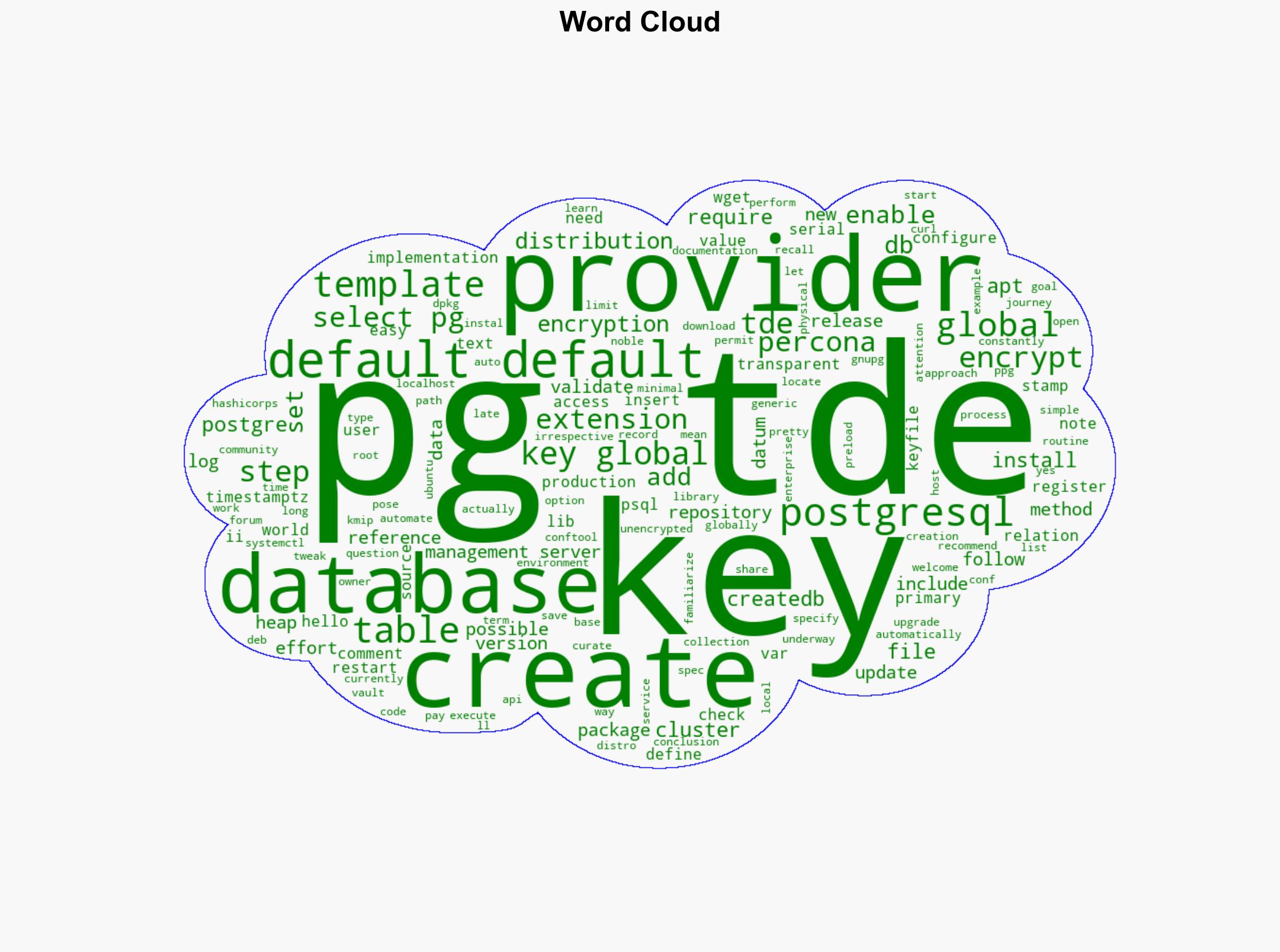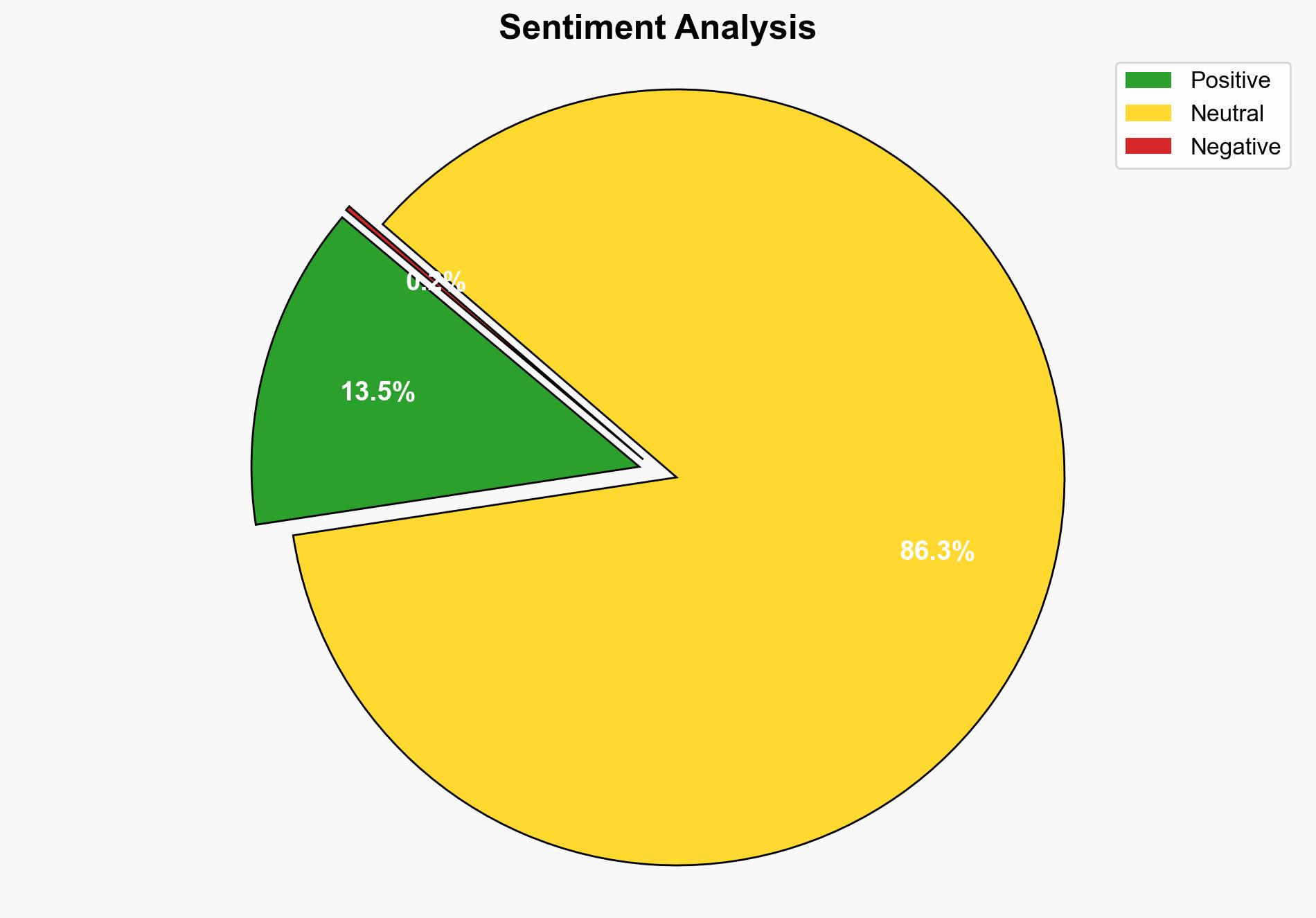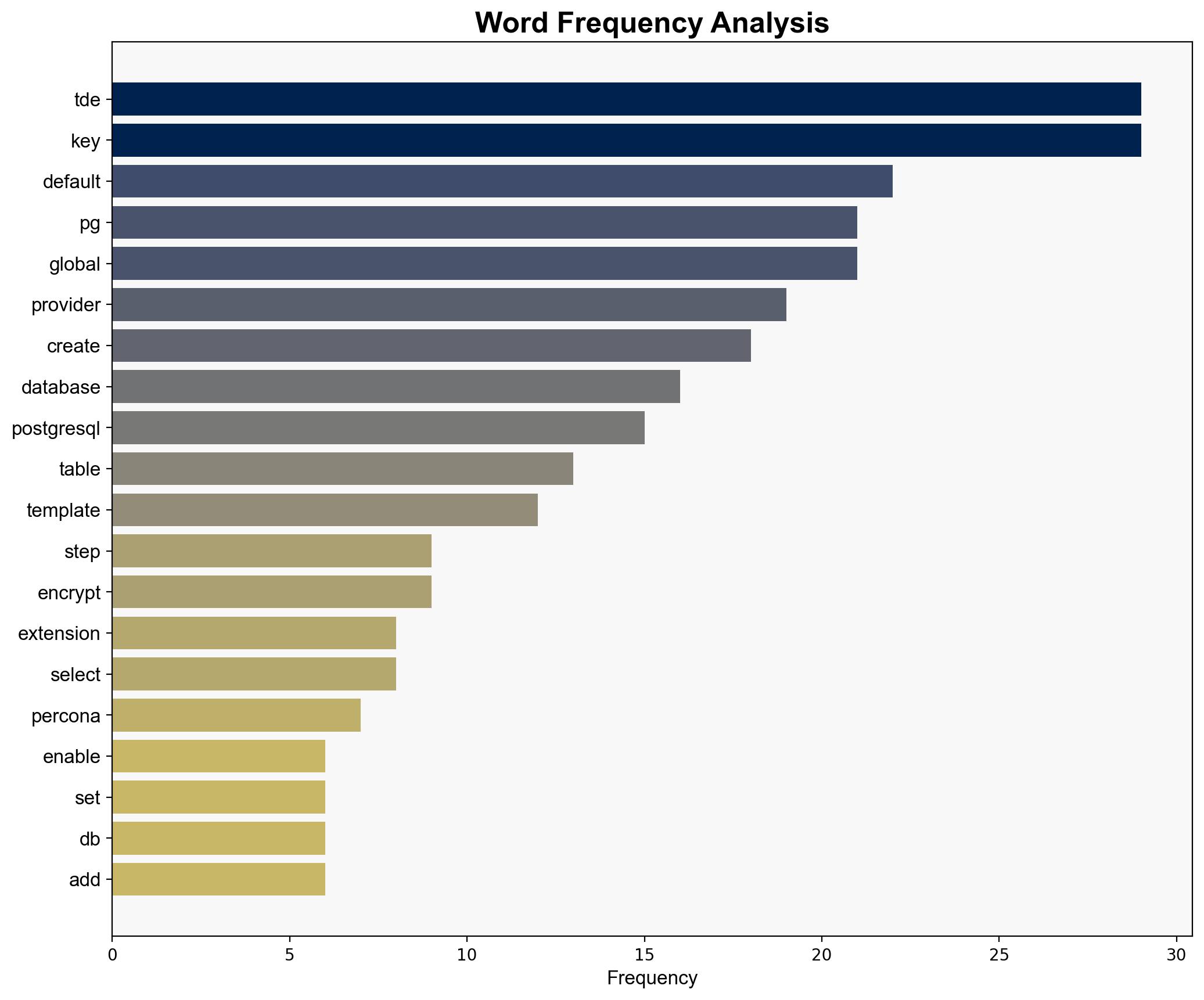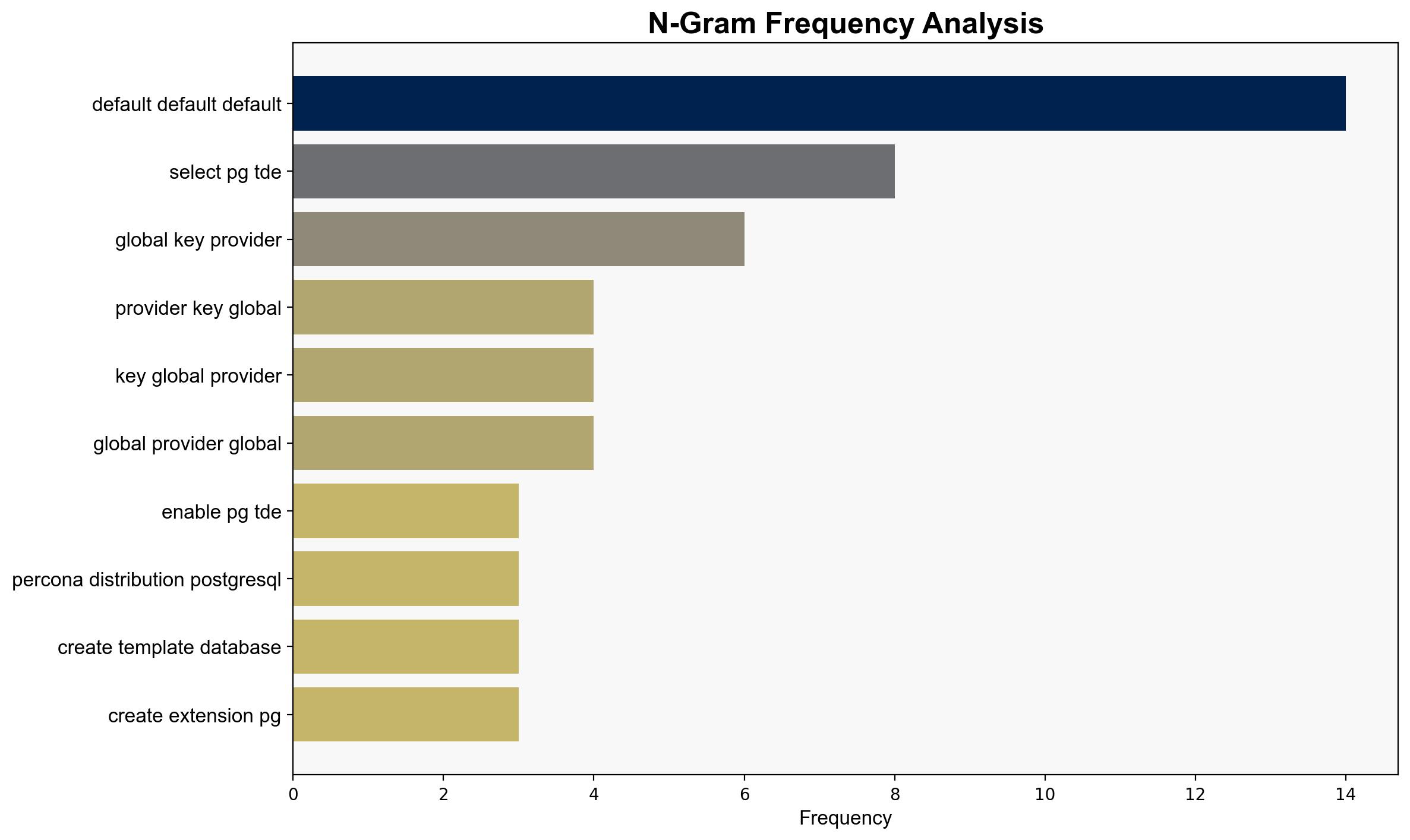Transparent Data Encryption The Best Way to Secure Your Data in PostgreSQL – Percona.com
Published on: 2025-07-08
Intelligence Report: Transparent Data Encryption The Best Way to Secure Your Data in PostgreSQL – Percona.com
1. BLUF (Bottom Line Up Front)
Transparent Data Encryption (TDE) in PostgreSQL, as implemented by Percona, offers a robust solution for securing data at rest. The process is streamlined through the Percona Distribution for PostgreSQL, which includes the necessary extensions for TDE. This approach enhances data security, making it a viable option for enterprises seeking to protect sensitive information. Key recommendations include adopting TDE for PostgreSQL databases to mitigate risks of unauthorized data access.
2. Detailed Analysis
The following structured analytic techniques have been applied to ensure methodological consistency:
Adversarial Threat Simulation
Simulating potential cyber adversaries’ actions reveals that implementing TDE significantly reduces the risk of data breaches by encrypting data at rest, thus limiting the impact of unauthorized access.
Indicators Development
Monitoring the implementation and performance of TDE can help detect anomalies that may indicate attempts to bypass encryption protocols or exploit vulnerabilities.
Bayesian Scenario Modeling
Probabilistic models suggest that the likelihood of successful data breaches decreases significantly with the adoption of TDE, as it adds an additional layer of security to the database infrastructure.
3. Implications and Strategic Risks
The adoption of TDE in PostgreSQL addresses a critical cybersecurity vulnerability by protecting data at rest. However, the reliance on encryption keys introduces a new risk vector, emphasizing the need for robust key management practices. Failure to secure encryption keys could negate the benefits of TDE, leading to potential data exposure.
4. Recommendations and Outlook
- Implement TDE for PostgreSQL databases to enhance data security and protect sensitive information from unauthorized access.
- Establish a comprehensive key management strategy to safeguard encryption keys and ensure data integrity.
- Consider scenario-based planning to prepare for potential threats, including best-case (full encryption implementation), worst-case (key mismanagement), and most likely (partial adoption with ongoing improvements).
5. Key Individuals and Entities
The report does not specify individual names. Key entities include Percona and PostgreSQL as primary stakeholders in the implementation of TDE.
6. Thematic Tags
national security threats, cybersecurity, data encryption, database security, key management





